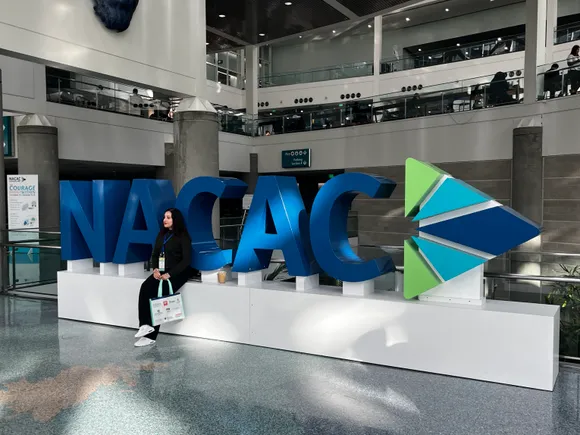LOS ANGELES — Amid ongoing enrollment challenges, colleges are increasingly looking for new pools of applicants. Transfer students offer one way for colleges to grow their student bodies, but institutions must offer them the right supports, according to Judy Johnson, assistant director of admissions and transfer at the Minnesota Private College Council.
Research shows that just 16% of community college students transfer and earn a bachelor’s degree within six years — despite a majority of these students expressing an intent in attending a four-year institution.
Institutions can, and should, make their campuses accessible to transfer students through their practices and policies, Johnson told college administrators Thursday at the National Association for College Admission Counseling’s annual conference. Johnson previously worked as a transfer specialist at Augsburg University and St. Catherine University, both of which are in Minnesota.
“You do not need to be the enrollment manager to do this. You do not need to be the registrar, the head honcho,” Johnson said. “You do not need power, but you do need initiative.”
Check your default settings
Whether intentionally or not, some colleges make transfer students their lowest priority through their policies.
For example, colleges typically give students with the most credits priority for class registration, meaning juniors and seniors get first pick. But one institution Johnson worked with gave transfer students the lowest registration priority — placing them after even first-year students.
“It destroyed their schedules because classes they needed were filled,” Johnson said. “If they come in as a junior, they should be able to register with the juniors.”
Another college packaged financial aid offers for the entire first-year class before those for transfer students, leaving the transfers in limbo until as late as July. Star students decided to enroll elsewhere because they weren’t able to wait any longer, Johnson said.
Help transfer students graduate on time
College admissions officers interested in increasing transfer student enrollment and success must review their course catalogs to look for ways to improve. “Anything that relates to transfer students in that catalog is a policy,” she said.
A course audit can ask important questions, such as if transfer students could reasonably complete every required course in two years.
Class availability can be another hurdle. Some faculty plan their upper-level courses on a four-year rotation, limiting options for students who don’t begin there as first-year students, Johnson said. She advised departments to revamp schedules to ensure students arriving on campus as juniors can take the necessary courses to graduate on time.
College administrators also need to proactively link incoming transfer students with on-campus services, according to Johnson.
“When students come in as a junior, they should be getting internships that year,” she said. “I needed them to connect early with that career office.”
Get faculty members on board
Johnson encouraged conference attendees to make faculty members partners in creating a welcoming environment for transfer students.
The first step is communication. Faculty are not typically aware if students are transfers and will assume those in their class have been at the institution for the entirety of their education, she said.
To combat this, college admissions officers can send instructors a notification each semester identifying the transfer students. In turn, Johnson said, faculty could get in the habit of sending a welcome message to the transfer students.
A significant portion of transfer students come from community colleges. But they — and their former institutions — often face negative stereotypes among college employees, Johnson said.
In one case, for instance, faculty in STEM fields expressed to Johnson a distrust of the scientific labs at their local community colleges. In response, she arranged a tour of the facilities, and seeing the labs for themselves settled the concerns.
Helping create a welcoming environment for transfer students could fuel enrollment — potentially an attractive option for faculty members who are worried that falling headcounts will lead to academic cuts.
“Go to the faculty that are most scared that their major is not going to make it,” Johnson said. “Faculty will become transfer-interested if they are scared their department’s gonna close. They will be enthusiastic about getting transfer students and then propose solutions.”
#college #welcoming #transfer #students










